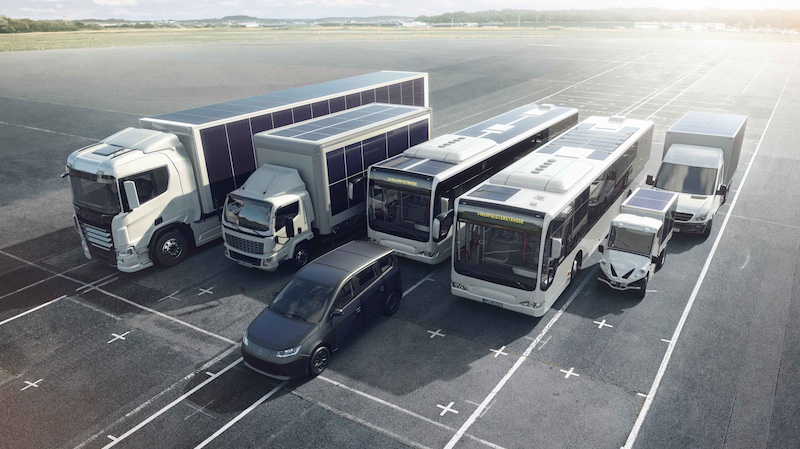What is a protective shield procedure?
Sono Motors GmbH will stop developing its solar cars and has filed an application with the district court in Munich to open protective shield proceedings. Because the start-up is threatened with bankruptcy. But what about the current situation of the company and what exactly is this “protective shield procedure”?
Sono Motors GmbH is a German company that worked on the development of the electric car “Sion” and equipping vehicles with solar cells. The company was founded in 2016 and made headlines because it had several crowdfunding campaigns, including over indiegogoraised funds to manufacture its solar cars.
The money should then be put into the development of the “Sion”, which would be equipped with solar cells in the body and should cost around 16,000 euros. However, follow-up financing was no longer successful.
According to Sono Motors, among other things, the investors demanded that patents be transferred to them, which Sono Motors found unacceptable. Due to the lack of funds, there was a risk of insolvency, which is why the company was now forced to apply for the protective shield procedure.
Contents
What is a protective shield procedure?
The protective shield procedure is one of the modern instruments of German insolvency law that enable corporate restructuring. The aim of the procedure is to successfully carry out the restructuring of a company in an orderly process.
An application for a protective shield procedure may not be made if insolvency has occurred, but only if insolvency or overindebtedness is imminent. Furthermore, the desired restructuring must not be obviously hopeless.
Modern corporate restructuring
This means that the protective shield procedure can be classified as a preventive procedure within the framework of corporate restructuring, which aims to continue running a company. In contrast to “normal” insolvency proceedings, the aim is not to wind up the company.
For example, there is only a “provisional administrator” who does not have the rights of an insolvency administrator. Rather, he only has control rights. The remaining rights of an insolvency administrator are assumed by the self-administering debtor, in the present case Sono Motors, who thus acts in a dual role as self-administering debtor and insolvency administrator.
Protective shield procedure and self-administration
The protective shield procedure should not be confused with the insolvency procedure under self-administration. The difference between the two types of procedure is that in the protective shield procedure there must be no insolvency. Provisional self-administration is also possible in the event of insolvency.
Since insolvency is only “threatening” at Sono Motors, the protective shield procedure makes sense in order to possibly save the company. After all, the technology from Sono Motors should continue to be used with regard to the use of solar cells in motor vehicles and passenger cars and is probably already being used by other vehicle manufacturers.
However, the protective shield procedure, like the (preliminary) insolvency procedure under self-administration, is an insolvency opening procedure, which means that an application for insolvency must be made. If insolvency actually occurs as part of the protective shield procedure (it is only a threat when the application is submitted), then this will be communicated to the creditors.
However, their reactions are often unpredictable. In addition, there is the risk of liability for the managing directors if they are still making payments, and the consequences of the existence or non-existence of an insolvency plan are also not entirely clear. Finally, the regular insolvency proceedings follow with all the associated consequences for the creditors.
Sono Motors: Is there money back for customers who order the Sion?
However, there are already thousands of pre-orders for the planned “Sion” vehicle, including as part of crowdfunding campaigns. The customers had already made a down payment for this (in some cases even full payments regarding the planned purchase price, as can be seen, for example, from the Indiegogo campaign of 2016) and should, at least according to an announcement by the company in February of this year, part of the received deposit back.
This would have applied at least to those customers who had agreed to the repayment plan. Those who did not have probably already received around 1.7 million euros. Nothing will come of the further repayments. Because the protective shield procedure is being applied for because there is not enough money and there is a risk of insolvency.
According to the law, an imminent insolvency exists when a situation exists in which the debtor is unlikely to be able to meet his existing payment obligations when they fall due. By “probably” it is meant that there is a reasonable probability that it will occur.
The company will now present a plan on how to continue the business activities. This will probably include not paying back the down payment simply because the money is not available for it. However, if the plan does not work out, then the regular insolvency proceedings will follow, which means that the existing assets will be divided among all creditors after deduction of costs and the company will then cease to exist.
Sono Motors’ protective shield proceedings: An unfortunate situation
It is unfortunate that Sono Motors cannot pursue its innovative plan to develop a vehicle with integrated solar panels. It is also unfortunate that many of those who believed in the success of the company will probably go away empty-handed or, in the case of orders placed, will not receive a product, but on the other hand will not get their deposit back either.
However, one must also not forget that with such new approaches and business activities it is always possible that the planned project cannot be implemented and therefore providers of finance are left empty-handed. Even if it sounds harsh: This risk should be clear to everyone involved and should be planned for.
Also interesting:



